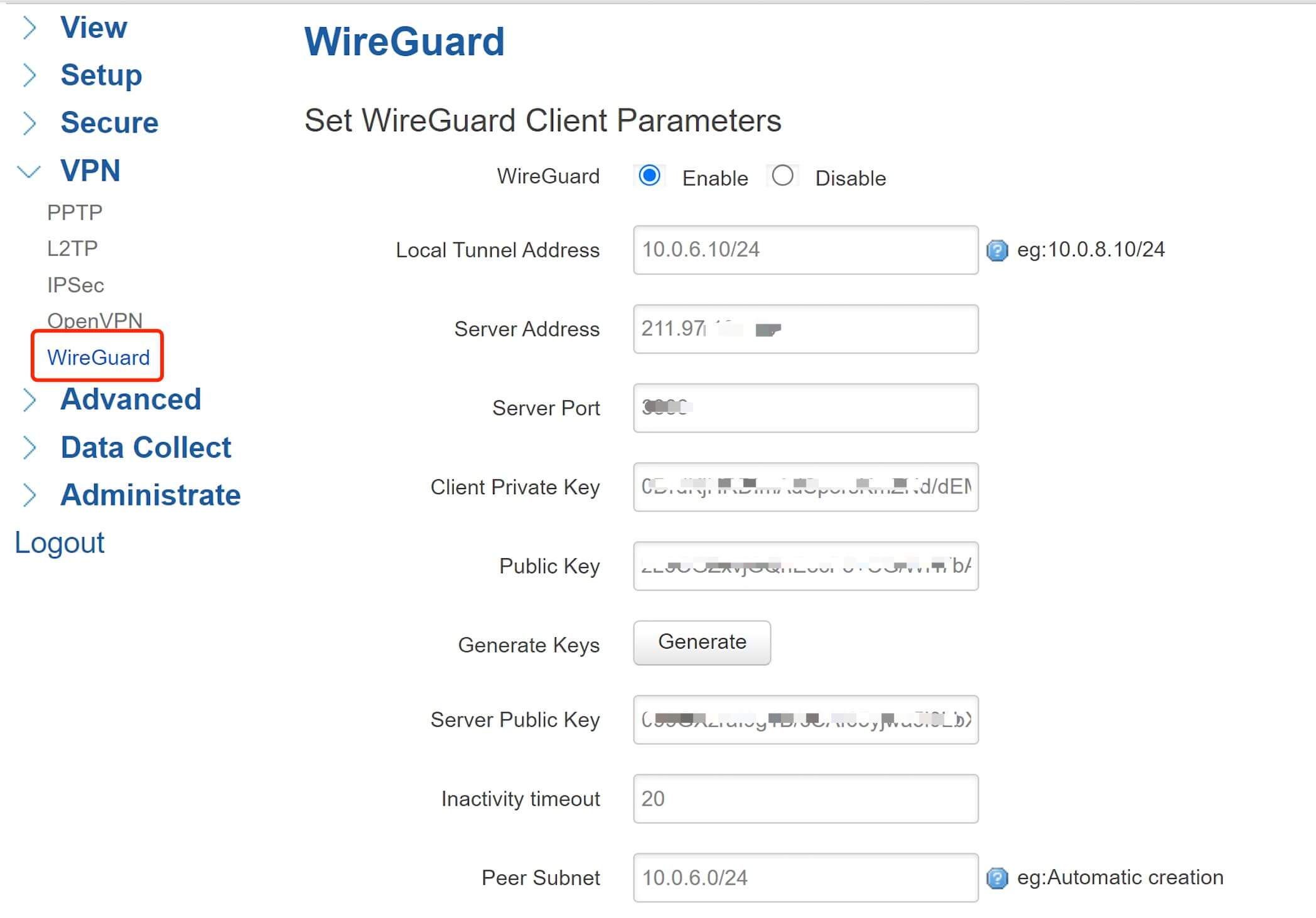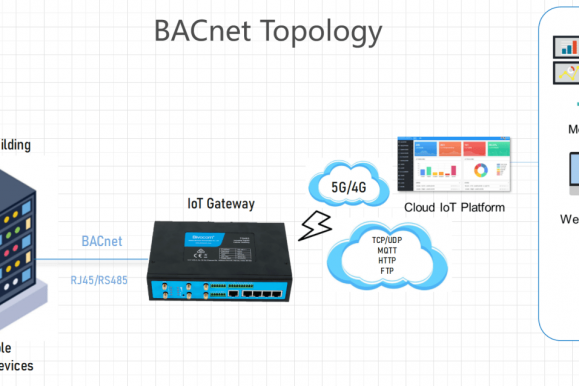Bivocom has released customized firmware on its industrial IoT edge gateway TG452(openwrt based Linux) to support wireguard, this article will give you a quick overview of what is wireguard, how wireguard work, and what benefits it brings to IoT(Internet of things)
- What is Wireguard?
WireGuard is an open-source virtual private network (VPN) protocol and software that aims to provide a simpler, faster, and more secure way to establish encrypted network connections. It was designed with simplicity and efficiency in mind, and it has gained popularity for its modern approach to VPN technology.
WireGuard utilizes state-of-the-art cryptography to create secure point-to-point connections between devices. It operates at the kernel level, which allows it to offer high performance and low resource usage. The protocol uses a streamlined codebase and implements modern encryption algorithms, such as Curve25519 for key exchange and ChaCha20 for encryption.
Compared to traditional VPN protocols, WireGuard offers several advantages, including fast connection establishment, lower latency, and easier configuration. It is also designed to be resistant to network and session hijacking attacks.
Overall, WireGuard has gained a lot of attention due to its simplicity and efficiency, making it a popular choice for setting up secure VPN connections.
- How does Wireguard work?
At a high level, WireGuard works by creating a secure network tunnel between two devices, commonly referred to as peers. This tunnel allows the devices to communicate with each other while keeping the data encrypted and protected from unauthorized access.
Here’s a simplified overview of how WireGuard works:
Key Exchange: When a WireGuard connection is established, the peers exchange a set of cryptographic keys. This is typically done during the handshake process using the Diffie-Hellman key exchange algorithm, specifically with Curve25519 elliptic curve cryptography. The keys are used to authenticate and encrypt the traffic between the devices.
Encryption and Decryption: Once the keys are exchanged, WireGuard encrypts the data using symmetric encryption, commonly with the ChaCha20 stream cipher, along with Poly1305 for message authentication. This combination provides confidentiality and integrity of the transmitted data.
Network Interface: WireGuard creates a virtual network interface (usually named wg0) on each device involved in the connection. This interface behaves like a traditional network interface, allowing applications and services to send and receive IP packets through it.
Secure Tunnel: WireGuard encapsulates the IP packets into UDP (or in some cases, other transport protocols) packets, which are then sent over the network between the peers. These packets carry the encrypted data, along with the necessary information to route and decrypt them on the receiving end.
Route Control: WireGuard controls the routing of the network traffic, ensuring that the encrypted packets are correctly directed through the secure tunnel. It uses a routing table to determine which packets should be sent through the WireGuard interface and which should follow regular network paths.
By establishing this secure tunnel and encrypting the data, WireGuard ensures that the communication between the peers is protected from eavesdropping and tampering. It also provides the ability to traverse NAT (Network Address Translation) devices, making it more convenient to use in various network setups.
Overall, WireGuard takes a lightweight and modern approach to VPN technology, simplifying the complexities of traditional protocols while maintaining strong security and performance.
- What are the benefits of Wireguard for IoT?
WireGuard can indeed be used for securing communications in IoT (Internet of Things) environments. It offers several advantages that make it a suitable choice for IoT devices:
Lightweight and Efficient: WireGuard is designed to be lightweight and efficient, making it suitable for resource-constrained IoT devices with limited processing power and memory. It has a small codebase and operates efficiently even on devices with low computational capabilities.
Strong Security: WireGuard employs modern cryptographic algorithms, such as Curve25519 for key exchange and ChaCha20 for encryption. These algorithms provide strong security and help protect IoT devices and their data from potential threats.
Simplified Configuration: WireGuard simplifies the configuration process compared to traditional VPN protocols. This makes it easier to set up secure connections between IoT devices and networks, reducing administrative overhead and potential configuration errors.
Quick Connection Establishment: WireGuard is designed for fast connections. It establishes connections quickly, allowing IoT devices to establish secure communication channels rapidly, which is beneficial for real-time or time-sensitive applications.
Dynamic IP Support: IoT devices often operate in dynamic IP environments, where IP addresses can change frequently. WireGuard handles dynamic IPs seamlessly, adaptively updating the tunnel endpoints to accommodate the changing network conditions without requiring manual intervention.
NAT Traversal: Network Address Translation (NAT) is commonly used in IoT deployments. WireGuard is NAT-friendly, enabling IoT devices to establish secure connections even when they are located behind NAT devices.
Open Source and Audited: WireGuard is an open-source project that has undergone extensive security audits. The transparency of the codebase and the auditing process contribute to increased trust in the security and reliability of the protocol.
These features make WireGuard well-suited for securing IoT device communications, whether it’s for protecting data transmitted between IoT devices and cloud services or establishing secure connections between IoT devices within a local network.
- Wireguard config page on IoT gateway


Note: Some of the articles is from AI, any questions, pls contact Bivocom




Comment